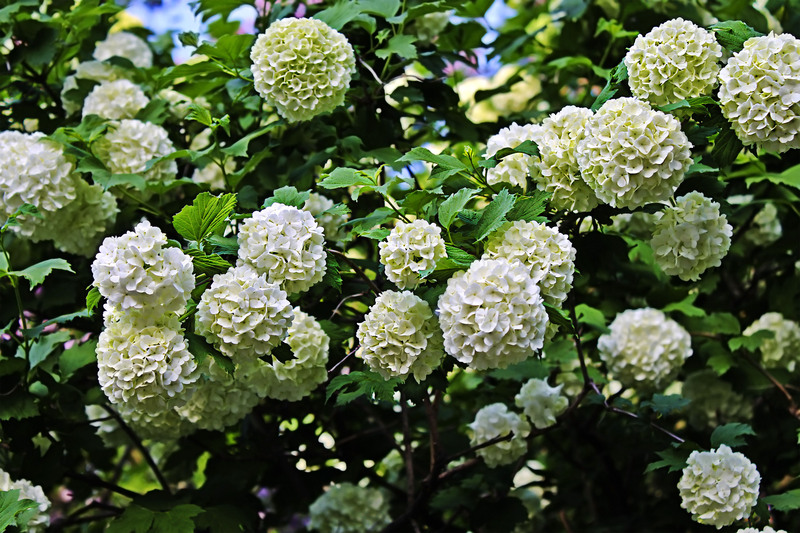Orchids Unleashed: Mastering the Care Experience
Posted on 04/06/2025
Orchids Unleashed: Mastering the Care Experience
Orchids have long captivated plant enthusiasts with their stunning and diverse blooms, delicate fragrances, and unique characteristics. Despite their allure, many growers feel intimidated by these exotic flowers, worried they are too finicky or difficult to maintain. But the reality is, with the right guidance, anyone can unlock the secrets of masterful orchid care and experience the joy of thriving, repeat-blooming plants. In this guide, we will unleash a new level of confidence and know-how to ensure your orchids not only survive, but truly flourish.
Understanding the World of Orchids
Orchidaceae, the orchid family, is one of the largest and most diverse in the plant kingdom, encompassing over 25,000 species and more than 100,000 hybrids. They are native to almost every corner of the world, from steamy tropical jungles to cool mountainous regions. This diversity means there is an orchid variety perfectly suited to almost every household environment.
Popular Types of Orchids for Home Cultivation
- Phalaenopsis (Moth Orchids): Perfect for beginners, these are known for long-lasting, beautiful flowers in every shade imaginable.
- Cattleya: Often called the "Queen of Orchids," praised for their ruffled petals and delightful fragrance.
- Dendrobium: Diverse and resilient, offering both miniature and large-flowered variants.
- Oncidium (Dancing Lady): Recognized by their sprightly, butterfly-like blossoms.
- Vanda: Spectacular blooms, often grown in hanging baskets with exposed roots.
Mastering the care experience begins with choosing the right orchid for your space and understanding the general requirements of each type.

The Basics of Orchid Care: Essential Knowledge
While each genus might have specific requirements, most orchids share fundamental needs that, when met, yield rewardingly healthy and vigorous plants. Here are the core principles you must master:
1. Light: Illuminating Growth
Orchids love light, but most do not thrive in direct, scorching sun. Instead, bright, indirect light is preferred. East or west-facing windows are typically ideal. Too little light leads to scant blooming, while too much can scorch leaves.
- Phalaenopsis: Medium, filtered light. Leaf color should be medium green.
- Cattleya: Bright, but avoid hot midday rays. Leaves should be light green if lighting is correct.
- Dendrobium: Tolerates more light, but avoid extremes.
Tip: If you notice orchid leaves turning dark green and not flowering, it may need more light. On the other hand, yellowish leaves or brown blotches often signal too much sun.
2. Water: The Art of Hydration
One of the most misunderstood aspects of orchid care is watering. Orchids like their roots to dry out between waterings, as constant moisture is a sure path to root rot.
- Check the media: Stick your finger into the potting mix an inch deep. If it feels dry, it's time to water.
- When to water: Generally, once a week is sufficient. During active growth, some orchids may prefer more frequent hydration.
- How to water: Soak the pot thoroughly, allowing excess water to drain out. Never let the pot sit in water.
Avoid misting heavily, as leaves that stay damp can promote fungal diseases. Water in the morning so the leaves dry out before nightfall.
3. Humidity: Tropical Balance
Orchids thrive in environments with 40-70% relative humidity. If your home is dry, especially in winter, boost humidity using:
- A pebble tray with water under the orchid's pot (without touching the pot bottom).
- A room humidifier.
- Grouping plants together to create a microclimate.
4. Airflow: Preventing Disease
Good air circulation helps orchids avoid fungal and bacterial issues. Use a small fan on a low setting near your orchid display (but not blowing directly on the plants) to keep the air moving gently.
5. Temperature: Mimicking Nature
Most cultivated orchids do best with daytime temperatures between 65-80?F (18-27?C) and night temperatures about 10 degrees lower. Some types like Phalaenopsis benefit from a short period of cooler night temperatures to trigger blooming.
6. Orchid Potting Media & Repotting
Unlike common houseplants, orchids typically don't grow in soil. Instead, they need a chunky, well-draining potting medium. The typical options are:
- Pine or fir bark
- Sphagnum moss
- Coconut husk chips
- Perlite or charcoal
Repot every 1-2 years, and always after the bloom is finished. Signs it's time to repot include:
- Breaking down or compacted media
- Roots growing out of the pot
- Lingering wetness, or foul smell
7. Feeding Orchids: Nutrition for Vibrant Blooms
Orchids have modest nutritional needs. Use a balanced fertilizer--such as a 20-20-20 mix--diluted to quarter strength, every two to four weeks while actively growing. Cease or greatly reduce feeding when the plant is dormant or not producing new leaves or roots.
Choose a fertilizer labeled for orchids, as these usually contain all necessary micronutrients for optimal growth. Flush the pot with plain water every 4th feeding to avoid salt buildup in the media.
8. Encouraging Orchid Reblooming
Perhaps the greatest reward in mastering the orchid care experience is getting your orchids to rebloom year after year. This is possible with consistent care:
- Provide sufficient light: Most reblooming problems stem from insufficient light.
- Temperature swings: A drop in nighttime temperature by 10?F for a few weeks can stimulate flower spikes, especially in Phalaenopsis.
- Water strategically: Cut back watering slightly after blooming ends, then increase as a new spike appears.
Advanced Tips: Troubleshooting and Orchid Pests
Common Orchid Problems and Solutions
- Wrinkled or limp leaves: Often a sign of underwatering or root problems. Check roots for rot and adjust your watering routine.
- Yellow leaves: Can indicate too much light or natural leaf drop on older leaves. Move the orchid to a shadier spot if necessary.
- No blooms: Likely insufficient light or lack of temperature differential. Adjust care accordingly.
- Rot or mushy roots: Overwatering or improper media. Remove the plant, trim damaged roots, and repot in fresh medium.
Dealing with Orchid Pests
Common pests include scale insects, mealybugs, spider mites, and aphids. Look for sticky residue, cottony patches, or webbing. Remedies include:
- Wiping leaves with a solution of mild soap and water.
- Applying insecticidal soap or neem oil for stubborn infestations.
- Isolating new or affected plants to prevent spread.
Prompt action is vital to keep your orchids safe and healthy.
Repotting and Dividing Orchids: Propagation Possibilities
Orchids will outgrow their pots and require repotting every couple of years. Dividing mature plants is also one way to expand your orchid collection:
- Gently remove the orchid from its pot and shake away old media.
- Trim away rotten or dead roots with sterile scissors.
- Divide plants: If your orchid has multiple growths (such as some Cattleyas), carefully separate these into sections with at least three healthy pseudobulbs each.
- Place each division into fresh media, water lightly, and keep out of strong sunshine until new growth appears.
Repotting not only gives orchids renewed vigor but also offers an excellent opportunity to expand your collection and share plants with friends.
Myths and Misconceptions about Orchid Care
- "Orchids are difficult to grow." - False! Many orchids are surprisingly tough and are adaptable to typical home conditions with proper care.
- "All orchids need the same care." - In reality, different types of orchids have slightly different requirements. Understanding your plant's identity is key.
- "Ice cubes are the best way to water orchids." - This internet myth can cause cold damage and irregular watering. Stick to thorough soaking and proper drainage.
Orchid Display: Showcasing Your Botanical Masterpiece
Once you're mastering the orchid care experience, creative display enhances their beauty and health:
- Use decorative cachepots (never without drainage holes) that complement your orchid's color.
- Mounting certain types (like Vandas or Dendrobiums) on cork or wooden plaques mimics their natural habitat.
- Grouping several orchids together not only improves humidity but creates a show-stopping focal point.

Enriching the Orchid Experience: Further Learning
The world of orchids is as expansive as your curiosity. Continue your journey by:
- Joining a local or online orchid society for support, advice, and plant swaps.
- Visiting orchid shows to see rare species and cutting-edge hybrids.
- Documenting your own successes and failures to refine your care techniques.
Conclusion: Orchids Unleashed--Your Path to Expert Orchid Care
Orchids can reward you with years of vibrant blooms and elegant greenery when given thoughtful attention and a bit of know-how. From understanding light and water needs to nurturing reblooming and managing pests, every aspect of orchid mastery enhances your enjoyment and confidence as a plant owner.
By unleashing the full potential of your orchids and refining your care skills, you'll be well on your way to experiencing the true magic of these botanical marvels. Start your orchid journey today--embrace the beauty, the challenge, and the incredible rewards of mastering the orchid care experience!

